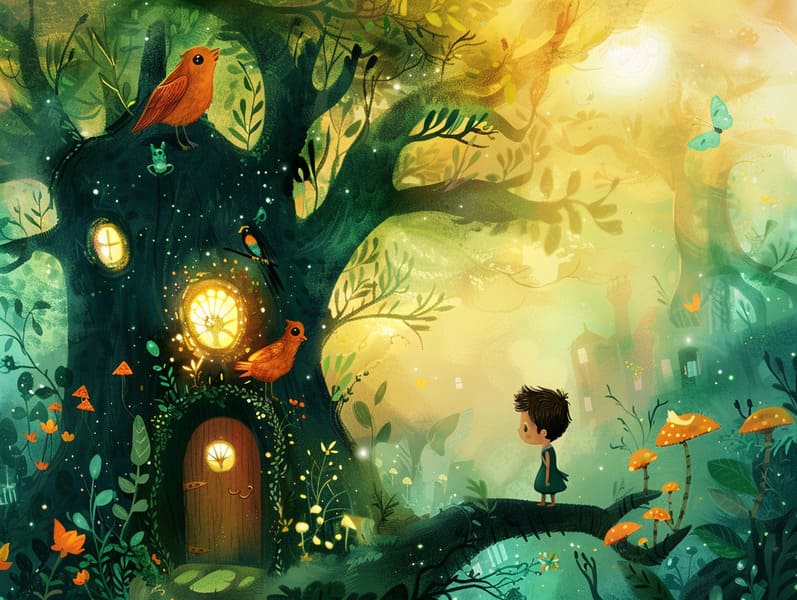
Legendary fairy tales have enduring presence. These narratives have been spoken from one generation to the next well before they were ever published. They developed from a variety of backgrounds, including European traditions. They were initially conveyed among mature audiences, often carrying themes and messages related to the societal norms and beliefs of the time.
The renowned Brothers Grimm, Jacob and Wilhelm, were among the first to collect many of these beloved narratives. Their volume, "Grimm's Fairy Stories," included narratives like "Cinder Maid," "Hansel and Grethel," and "Snow-White and Rose-Red," which have since become staples in the world of classic fairy tales. Similarly, Andersen's charming narratives, such as "The Story of the Little Mermaid," and "The Ugly Duckling," have captivated hearts worldwide, cementing their place in the pantheon of treasured fairy tales.
Though they are centuries old, traditional fairy tales remain as important as ever, especially as children's night stories. These magical stories are now available in different formats, including richly illustrated books, delightful animations, and online storybooks.
Their enduring popularity can be connected to several whimsical characteristics:
Important Morals: Classic fairy tales often illustrate important moral lessons. Fairy tales like "The Tale of the Boy Who Cried Wolf" teach the merit of truth, while "The Hare and the Tortoise" stress the benefits of steadfastness and modesty. These narratives offer young readers clear distinctions between moral and immoral, developing their moral compass in a mild yet lasting way.
Warmth and Understanding: Fairy tales frequently include personalities facing trials and tribulations, stimulating children to connect with their struggles and applaud their triumphs. For instance, "Beauty and the Beast" highlights the merit of looking deeper to realize the inner being of a individual, developing kindness and insight.
Cultural Perception: Many timeless fairy tales are deeply ingrained in the cultural contexts from which they grew. Discovering these narratives can provide fascinating glimpses into different customs, promoting a sense of world insight and acknowledgment.
Fantasy and Innovation: The extraordinary elements in classic fairy tales—talking animals—activate children’s innovations. These narratives move readers to mythical realms, encouraging inventive ideas and a sense of fascination that persists a lifetime.
Traditional fairy tales are not only magical but also educational. They function as alluring tools in building various mind and heart abilities in children. When timeless fairy tales are spoken, they nurture language skills by presenting new terms and meanings and elaborate sentence structures. This practice also nurtures listening abilities and mental focus, as young ones remain attentive, enthusiastic to see what happens next.
Furthermore, analyzing the themes and characters of old fairy tales can nurture cognitive skills and reasoning skills. Young readers are instructed to recognize patterns, predict happenings, and catch on to cause and effect. These explorations also contribute to kids voice their thoughts and feelings, nurturing their emotional intelligence.
In today’s technological age, the availability of digital storybooks has made these fairy tales more reachable than ever. Internet sites and web apps give comprehensive collections of popular fairy tales that can be experienced or heard anytime, anywhere. Fairy tales read out loud are particularly favored, supplying an immersive method for children to engage with these fantastical tales. Sound books and voiced videos carry characters and settings to life, often accompanied by enchanting musical scores and musical scores that boost the tale-telling adventure.
The timeless allure of traditional fairy tales lies in their ability to evolve to modern times while keeping hold of their main lessons. Contemporary revisions of these narratives often introduce more representative figures and modern settings, making them meaningful to today’s audience. However, the main awesome site ideas of heroism, benevolence, and lawfulness remain unchanged, continuing to impact children of all ages.
Traditional fairy tales also offer a sense of solace and homeliness. They render accessible a well-ordered narrative with a recognizable beginning, middle, and end, often wrapping up with the culmination of conflicts and the triumph of right over wrong. This dependability can be comforting for little ones, granting a sense of constancy in an fluctuating world.
Ancient fairy tales continue to entrance and educate new generations, maintaining their enchantment and meaningfulness in modern society. As children's night stories, they introduce a perfect blend of charm and understanding, nourishing moral values, empathy, and creativity. The accessibility of online fairy tales and the widespread nature of fairy tales read aloud certify that these classic narratives remain attainable to new generations.
By sustaining and relating these fairy tales, we continue to recognize the rich tapestry of lore and cultural heritage. Whether you are accessing a gorgeously illustrated book, discovering a cyber collection, or listening to an spoken story, the enchantment of famous fairy tales is always within reach. These tales demonstrate of the unceasing magic of tales and its ability to hold us together across eras and regions.
If you are perusing a vibrantly illustrated book, perusing a virtual collection, or listening via an audiobook, the delight of popular fairy tales is always within reach.
These fairy tales point out of the unfading spell of tales and its ability to tie us across time and space, making a tie that enchants and educates alike.
Comments on “The Genesis of Short Fairy Tales with the Enduring Elegance.”